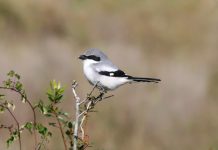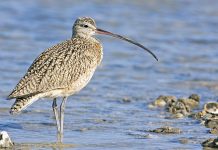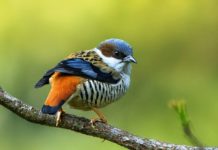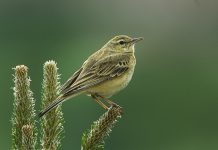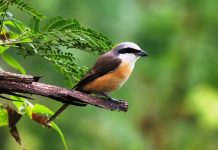The size of Bobolink is 18 cm in length. It is a transatlantic vagrant. A plump, bunting-like bird (about the size of Corn Bunting, but shorter-tailed) with curiously spiked tips to tail feathers and a prominent conical bill. The summer male is unmistakable: the main blackbird with the buff nape and striking white scapulars and rump patch (extending from back to upper tail coverts). Sadly, this plumage is likely to be seen in the European region as species are usually recorded only in autumn.
Female and winter males are mostly warm buffish with prominent dark streaking on the head and upper parts (including rump), fairly noticeable whitish ‘braces’ on the mantle, and some dark streaking on flanks and to a lesser degree breast sides (streaking may be hidden by folded wing).
The head shows an important dark lateral crown stripe which contrasts with buff median coronal stripe and supercilium, the latter highlighted by a dark eye stripe (from behind the eye only). In these plumages, Bobolink recalls a large, plump, very warm buff version of a female House Sparrow, but is easily distinguished by striking head pattern.
The adult female/immature is Yellow-breasted Bunting is fairly alike in plumage pattern, but is smaller, with a longer tail (lacking spiky feather tips, and showing white in outer feathers), duller and fewer buff upperparts and yellower underparts: has dark malar stripe typical of most buntings but lacking in Bobolink.
Be careful escaped female weavers of certain species which can resemble Bobolink in coloration, but this lack both strong head patterns and spiky tips to tail feathers. The bird spends much of its time feeding on the ground in short grass. The flight is fast and direct.
Adult male winter resembles adult female as black of plumage obscured by broad buff fringes, but some blackish appears with abrasion during late winter. Adult has two complete moults annually, in late summer/early autumn and again in late winter/spring, and both adult females and winter males are richer buffs on head and underparts (also upperparts) when in fresh plumage; when profoundly worn they are often quite whitish on sides of face and throat.
The juvenile bird is richer buff, especially below (worn) adult female, lacking dark streaking on sides of breast and flanks. 1stwinters cannot be sexed in the field, but some may be aged by the presence of unmoulted worn juvenile tertials with whitish fringes and often darker centers.
Bobolink call is very much clear, low, liquid ‘pink’, often given in flight. The song is a distinguishing loud bubbling, rather variable in nature (ranging from deep to high and thin) but often rendered ‘bobolink-bobolink-bobolink…’; frequently uttered during fluttering song flight. In the natural range, a bird of pastures, arable fields (grain, clover, etc.), and open grassland.
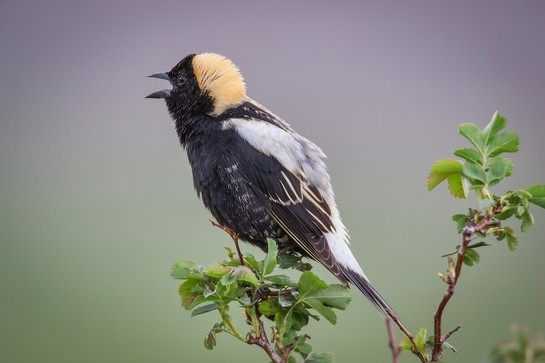


Read More – Mulga Parrot (Psephotus varius)

